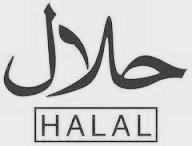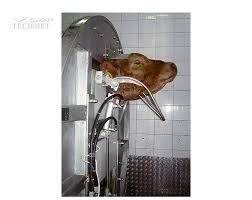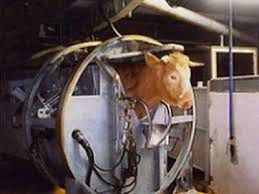THE POST-SLAUGHTER CONTROL AND HALAL STAMPING
Control is a laborious and difficult duty. It ensures the observance of the Islamic ritual used for food. Everything begins with the selection of a ritual slaughterer, who must be entitled to perform legal ritual slaughter and the selection of a controller, who is also responsible for the approval of ritual slaughter and for the supervision and constant monitoring of halal meat, from the slaughter until the packing of a ready product.
The control is necessary in order to check the species and condition of animals that are to be sacrificed, especially the sacrifice method. The controller must be Muslim. The person appointed for this position due to his features of character is a trustworthy, responsible, committed and disciplined person. His task is to ensure the observance of Islamic ritual slaughter, to mark the halal meat by means of stamping or tagging and to track its processing and marketing. Finally, the controller submits a report on the slaughter, packing, processing and marketing, which is presented to the manager responsible for the control at the end of each week. Control devices are the sole property of the controller (labels, badges…). He is the only person responsible for their management and use. They are stored in a room or a cabinet designed for this purpose, and the keys are kept exclusively by the controller.
There are the following control devices:
– a control form which must contain the data of a production company or a slaughterhouse, operation date, arrival and departure time, production and control method, ID codes (certification) used, the controller’s signature and the company’s or guest slaughterhouses’ stamp;
– stamps of different sizes with the logo of the controlling body;
– edible ink for stamps of a specific colour approved by a veterinary service;
– numbered labels with the logo of an inspection body, difficult to forge;
– tapes in different colours with the logo of an inspection body. It is unthinkable to certify that a product is halal when there is no control over its production. That is why certification is invalid without any prior inspection. Halal certification involves not only the placement of a stamp or label of a controlling body on a product. Packages are sealed with a special tape.
A “Halal Certificate” is valid only for specific goods that have been produced under the control with specific date. It must contain information such as the number and kind of packages and the total weight. It provides the guarantee that the product undoubtedly comes from ritual slaughter.
The certification process is strict if it is based on the following principles:
– selection of an animal,
– skills of the ritual slaughterer,
– strict and rigorous control,
– the possibility of tracking halal products. Inspectors must perform their duties at all stages of production. Nothing can be done without their presence.
– certification devices are the sole property of the controllers. They are the only people responsible for their use. The controller must undergo medical examination by an occupational medicine physician, as stipulated by applicable regulations. He must fulfil its mission in the control of cleanliness and hygiene of the environment. He must respect and obey the halal slaughter hygiene standards. In the event of a failure, he must notify the person responsible for this situation. Before the initiation of the control, the controller must ensure the cleanliness of his body and clothes, and must be dressed in accordance with sanitary regulations (a cap, face mask, white shirt, white shoes…). The controller must take care of personal hygiene and clothing. Ill employees (with purulent wounds on hands, discharge from the nose or eyes) can handle halal products only in disposable gloves and face masks, in order to prevent the meat contamination. It is forbidden to smoke in closed rooms and places where meat is stored, or in any other areas and corridors through which fresh meat is transported.












